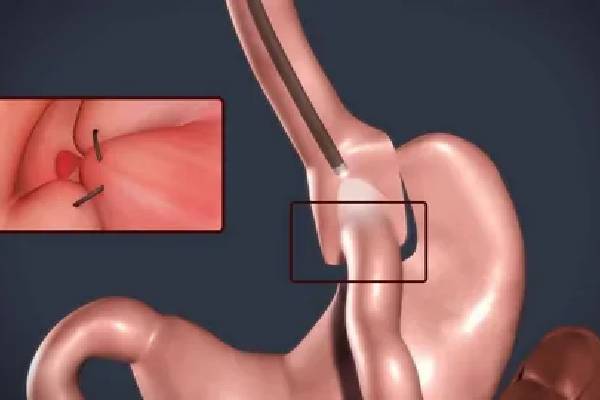Gastric Band Surgery: A Comprehensive Guide
Gastric band surgery, also known as laparoscopic adjustable gastric banding, is a popular weight-loss procedure designed to help individuals with obesity achieve sustainable weight loss. This minimally invasive surgery involves placing an adjustable silicone band around the upper portion of the stomach, creating a small pouch. The procedure limits food intake and promotes a feeling of fullness with smaller portions.
In this article, we’ll explore the benefits, risks, preparation, and recovery process of gastric band surgery, helping you make an informed decision about this weight-loss solution.
What Is Gastric Band Surgery?
Gastric band surgery is a type of bariatric procedure aimed at aiding weight loss. The band is adjustable and can be tightened or loosened over time to achieve desired weight-loss goals. This procedure does not involve cutting or stapling the stomach, making it a reversible option for patients.
Key Features:
- Minimally Invasive: Performed laparoscopically with small incisions.
- Adjustable: Band tightness can be modified based on weight-loss progress.
- Reversible: The band can be removed if necessary.
Who Is a Candidate for Gastric Band Surgery?
This procedure is typically recommended for individuals who:
- Have a Body Mass Index (BMI) of 40 or higher (severe obesity).
- Have a BMI between 30 and 39.9 with obesity-related health conditions such as diabetes, hypertension, or sleep apnea.
- Have tried and failed to lose weight through diet and exercise.
- Are committed to making long-term lifestyle changes, including dietary and exercise habits.
Benefits of Gastric Band Surgery
Gastric band surgery offers several advantages, making it a preferred choice for many:
Effective Weight Loss
- Helps patients lose 30-50% of their excess weight within 1-2 years.
Health Improvements
- Reduces risks associated with obesity, such as type 2 diabetes, high blood pressure, and joint pain.
Customizable
- The band can be adjusted based on individual progress, offering flexibility for long-term results.
Minimal Risk
- Lower complication rates compared to other bariatric surgeries, such as gastric bypass.
Potential Risks and Complications
While generally safe, gastric band surgery carries some risks:
- Band Slippage: The band may shift, causing discomfort or reduced effectiveness.
- Erosion: In rare cases, the band can erode into the stomach wall.
- Infection: Though rare, infections can occur at the incision site or around the band.
- Nutritional Deficiencies: Reduced food intake may lead to deficiencies without proper dietary planning.
Preparing for Gastric Band Surgery
Preparation is crucial for the success of the procedure and includes the following steps:
1. Medical Evaluation
- Comprehensive health assessment by a bariatric specialist.
- Blood tests, imaging, and other diagnostic procedures.
2. Dietary Changes
- Transition to a low-calorie diet to reduce liver size before surgery.
- Eliminate carbonated beverages and high-sugar foods.
3. Mental Health Evaluation
- Consultation with a psychologist to assess readiness for lifestyle changes.
4. Pre-Operative Instructions
- Follow fasting guidelines before surgery.
- Arrange for transportation and post-operative care.
The Gastric Band Surgery Procedure
Step-by-Step Process
- Anesthesia: The patient is placed under general anesthesia.
- Incisions: Small incisions are made for laparoscopic instruments.
- Band Placement: The silicone band is positioned around the upper stomach.
- Adjustment Port: An access port is connected to the band for future adjustments.
- Closure: Incisions are closed, and the procedure is completed in 1-2 hours.
Recovery and Aftercare
Recovery from gastric band surgery is typically quick, but adherence to aftercare guidelines is essential for long-term success.
Immediate Post-Surgery
- Patients may experience mild discomfort, managed with pain medication.
- A liquid diet is recommended for the first two weeks.
Gradual Transition
- Progress to soft foods before reintroducing solid foods.
- Small, frequent meals are advised to avoid overfilling the stomach pouch.
Long-Term Care
- Regular follow-ups for band adjustments and monitoring.
- Incorporate exercise and a balanced diet to maximize weight loss.
Lifestyle Changes Post-Surgery
Gastric band surgery is not a magic solution; it requires significant lifestyle modifications to ensure success:
Dietary Habits
- Eat Slowly: Chew thoroughly and savor each bite.
- Avoid Overeating: Stop eating as soon as you feel full.
- Stay Hydrated: Drink plenty of water but avoid drinking during meals.
Physical Activity
- Begin with light activities such as walking.
- Gradually increase to moderate-intensity exercises like swimming or cycling.
Mental Wellness
- Seek support from therapy or support groups to cope with emotional challenges.
- Celebrate small milestones to stay motivated.
Is Gastric Band Surgery Right for You?
Gastric band surgery can be a life-changing procedure for individuals struggling with obesity. However, it requires a strong commitment to lifelong dietary and lifestyle changes. Consulting with a qualified bariatric surgeon and understanding the benefits and risks is essential before proceeding.
If you’re considering gastric band surgery, take the first step toward a healthier life by scheduling a consultation with a bariatric specialist today.
By understanding the ins and outs of gastric band surgery, you can make an informed decision and embark on a successful weight-loss journey.

